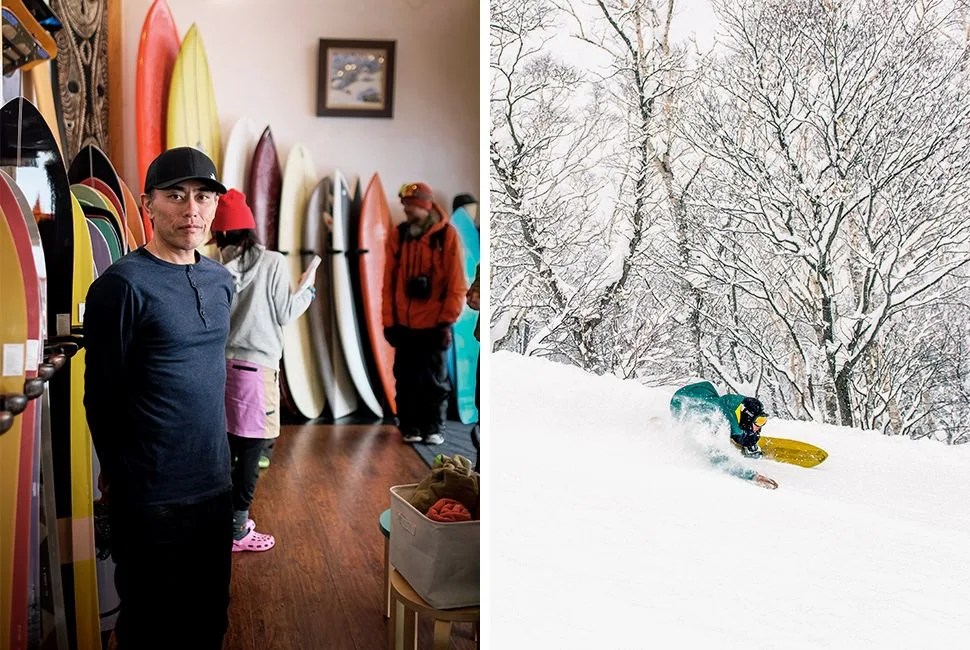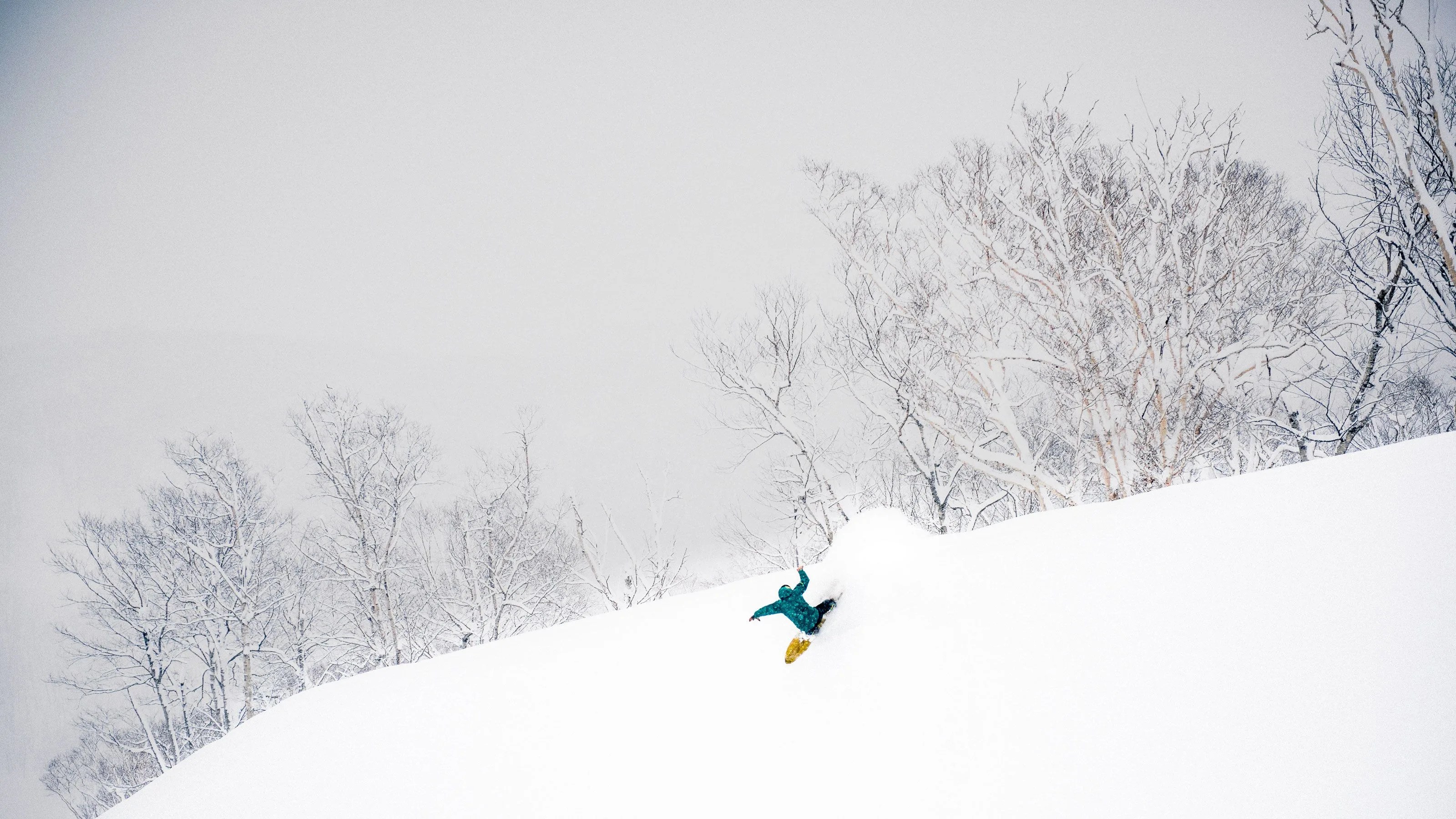From Issue Two of the Gear Patrol Magazine. Subscribe today for 15% off the GP Store.
A photograph of Shaun White snowboarding is unmistakable. His board, a frozen propeller blade stamped with Burton. Around him, nothing in the frame except distant snowy trees and a man-made landing below. The applause, moments away, comes from what he’s doing in the air, not on the snow far below.
A photograph of Taro Tamai snowboarding isn’t as clear at first inspection. Inside Gentemstick, his small Niseko snowboard shop, a handful of his framed photographs seem like abstractions: in one, a figure carves an Omega symbol into a snowy mountainside. But the sunlight burns the white snow reddish, like sand, and the figure, riding near the edge of a shaded tree line, is on darker, bluish snow, like an ocean wave. Other photographs are in fact of surfers, mid-turn on a swell. Tamai, a snowboard designer and photographer who’s lived most of his life on the snow or in the ocean, is the father of Japanese snowsurfing, a style of snowboarding that stayed closer to the mountain when everyone else was using ramps to get off of it.
Tamai, a longtime resident of Niseko, came from a skiing family. He says that at around 17 or 18 — he’s now 54 — he first witnessed snowboarding and something just clicked; he was drawn to it. “On skis, to master the technique takes a long time. When I saw snowboarding, I instantly felt that it’d take less time to master the technique, and I could focus more on riding than developing skills,” he said. “It’s pure riding over mastery of skills.”
“Pure riding” means using the terrain of the mountain to your advantage. You can’t fight a wave when surfing; you shouldn’t fight the natural lines of a mountain. While other snowboarders improve by going off bigger jumps or sliding along longer rails, Tamai improves through reading the mountain.

To this end, he’s always facing down the mountain. Boards created by Gentemstick are distinctly not for the terrain park. And of the three collections crafted at the shop, the Taro Tamai Snowsurf Design collection best exemplifies Tamai’s philosophy: the majority are swallowtails, which are directional boards that taper in width as they move toward the tail, before forking off into two thin strips, as with their namesake bird. This design plants the rider farther toward the back, which, along with the swallowtail and a more flexible construction, helps him easily sink the tail into the snow and float the tip above the powder. While the swallowtail better grips the snow, allowing for stability at speed, it comes at the cost of quick maneuverability. Tamai sacrifices the ability to perform tricks and quick turns, while Shaun White sacrifices speed and the feeling that a rider gets from the freedom of floating on frozen surf.
Think of a snowboard as a guitar. Anyone can pick up a guitar and make sound. People progress in skill, play more difficult songs, harder chords. My focus is on making music sound groovy, not necessarily more difficult.
Tamai didn’t stop with the board. He also redesigned his boots in partnership with K2 to match his style. They are soft and flexible, unlike the stiffer, shock-absorbing boots on most snowboarders’ feet. Early one morning at Hanazono resort, Tamai strapped into his new boots to demonstrate what his philosophy looks like firsthand, and like most things observed in nature, it’s generally uneventful but strikingly beautiful. There is no lost motion — just Tamai, a blur in his dark green jacket, taking wide turns, one arm resting completely on the snow, scanning the terrain. He’s bird-like, accepting speed from the mountain, smoothly following where it takes him instead of trying to force his will upon the snow. How many times have you seen a wild animal stumble and fall?
According to Tamai, nowadays if a professional snowboarder visits Niseko, he’ll almost certainly show up at his shop. But at first, without traditional advertising, it was the sight of Tamai riding that drew crowds to Gentemstick. “People had a vague idea of how they wanted to ride, and then they’d see Taro and he’d be riding exactly like they wanted to ride,” said his snowsurfing companion and translator Domi Churiki. Behind them, as they strapped in for the final run of the morning, Tamai gave another snow- boarder, who was using one of his boards, a thumbs up and a smile. And then he surfed.

